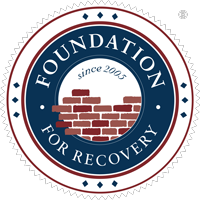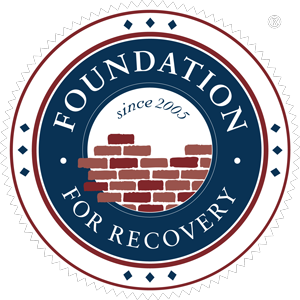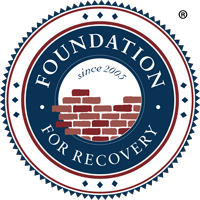Foundation for Recovery provides Nevada’s addiction and recovering community with practical information and tools to enhance their capacity to engage in effective stigma reduction efforts. Our goal is to unify the recovery community around key priorities — to reduce stigma by ending discrimination against people in recovery. In attempt to reduce stigma, FFR is sharing important statistics regarding our addiction and recovering community, which were recently released by the Office of Public Health Informatics and Epidemiology Division of Public and Behavioral Health Department of Health and Human Services.
Our hope is that by educating about the addiction epidemic in Nevada we can better understand the solutions and facilitate a conversation for Nevadans in recovery, their friends, families and allies as well as those still suffering. Please join us in bringing recovery into the consciousness of our community.
Nevada Behavioral Health Summary, April 2017
According to the Office of Public Health Informatics and Epidemiology Division of Public and Behavioral Health Department of Health and Human Services, the Nevada Behavioral Health Summary is intended to provide an overview of behavioral health in Nevada. The analysis can be used to identify issues of concern and areas that may need to be addressed. Findings from this report include:
- One finding is that of the 57,920 Nevada residents who received mental health services from the Division of Public and Behavioral Health, 17% received a diagnosis of schizophrenic disorder and 14% for major depressive disorder. Another finding is number of visits to the ER by residents of Nevada for seven mental disorders, and alcohol- and drug-related issues have all increased during the time period from 2009 to 2014. The ER visits for mental health disorders and treatment in SAPTA facilities appear to be sex-specific. For example, females made up a majority of ER visits for anxiety, depression, bipolar disorder and PTSD, while males made up the majority of ER visits for schizophrenia. In SAPTA-funded treatment facilities, an overwhelming majority of patients in treatment for alcohol abuse (35%), amphetamines/methamphetamines (28%), and marijuana/hashish (13%), and are males (62%).
- Two positive trends are the decrease in death rates in mental and behavioral health-related deaths and substance-related deaths. Mental and behavioral health-related deaths, while increasing in Nevada, has decreased from 130.0 to 128.2 deaths per 100,000 in Nevada. Substance-related death rates have decreased slightly in Nevada.
Mental and Behavioral Health Clinics
- The data in this section comes from Avatar, an electronic mental health medical record system used by the Division of Public and Behavioral Health (DPBH). DPBH is the largest provider of mental health services in Nevada. In Northern Nevada, DPBH clinics are categorized as Northern Nevada Adult Mental Health Services (NNAMHS). In Southern Nevada, DPBH clinics are categorized as Southern Nevada Adult Mental Health Services (SNAMHS).
- During the time from 2010 to 2014, 57,920 Nevada adults received mental health services from DPBH. Overall services totaled 161,817, as many patients used multiple services.
- During the period of 2010 to 2014, the most common primary mental health diagnoses for a Nevada resident was schizophrenic disorder, major depressive disorder, bipolar disorder, and mood disorder. It is important to note, that patients may have multiple primary diagnoses noted during each episode.
- Of the Nevada residents accessing DPBH mental health services between 2010 and 2014, 43% lived in Las Vegas. During the 5-year period of 2010 to 2014, there were 57,920 Nevadans who accessed mental and/or behavioral health services from DPBH. Females comprised 54% of the patient population and males comprised 46%. White non-Hispanics made up 62% of the population. The most populous age group was the 31-50 year olds, accounting for 45% of the patients. High school graduates accounted for 25% of the patients, followed by “some college” (20%) and “less than 12th grade, no diploma” (20%).
- In Nevada, about 113,000 adults aged 18 or older with AMI (32.0% of all adults with AMI) per year from 2010 to 2014 received mental health treatment/counseling within the year prior to being surveyed.
Hospital Emergency Room
- ER visits related to alcohol and drug use from 2009 to 2014. Alcohol-related visits increased from 21,063 visits in 2009 to 30,180 visits in 2014, a 43% increase. Substance abuse-related visits followed the same trend, with a low of 13,969 visits in 2009 to a high of 28,065 visits in 2014, a 101% increase.
- A majority of mental health and substance-related ER visits for Nevada residents was paid by Self-pay (29%), followed by “Insured” (24%), Medicare (18%), and Medicaid (18%).
Hospital Inpatient Admissions
- There were a total of 356,538 inpatient admissions related to mental health and substance use disorders among Nevada residents between 2009 and 2014 for the reasons listed above. Since an individual can have more than one diagnosis during a single inpatient admission, the following numbers reflect the number of times a diagnosis was given and therefore the following numbers are not mutually exclusive. Diagnoses related to mental disorders occurred in 260,047 inpatient admissions, there were 90,474 inpatient admissions related to alcohol- related issues, 88,204 inpatient admissions for drug-related issues, and 7,913 inpatient admissions with diagnoses codes related to suicide attempts.
- Depression was the most common mental health disorder for inpatient admissions for Nevada residents between 2009 and 2014, related to for 54% of the admissions from the disorders listed above in Figure 11. Depression inpatient admissions have increased consistently over the four year period, from 18,794 admissions in 2009 to 27,843 in 2014, a 48% increase.
- Anxiety was the second most common mental health disorder seen in inpatient admissions. Inpatient admissions has increased steadily over the four year period, from 11,466 admissions in 2009 to 23,266 in 2014, a 103% increase
- Bipolar disorder is the third most common mental health disorder seen in inpatient admissions among Nevada residents, related to 16% of admissions for the mental health conditions listed in Figure 10.
- Inpatient admissions for suicidal ideation experienced the greatest percent change from 2009 to 2014 with a 328% increase. The inpatient admission counts increased from 1,753 in 2009 to 7,501 in 2014.
- A majority of mental health and substance-related inpatient admissions for Nevada residents was paid by Medicare (40%). HMOs accounted for 14% of payment types for inpatient admissions. Medicaid accounted for 15%, and Self Pay accounted for 9% of payments.
Substance Abuse Treatment Facilities
The data in this section is reflective of services received by Nevada residents at treatment facilities funded by the DPBH’s Substance Abuse Prevention and Treatment Agency (SAPTA). This is not a comprehensive accounting of all Nevada residents who receive substance use treatment. The data are based on admissions, not patients, therefore a single person may represent multiple admissions.
- Alcohol is the dominant substance seen in treatment facilities and represents a 37.7% of patients seeking treatment at a SAPTA-funded treatment facility in 2010 and 35.0% of patients in 2014.
- Methamphetamines (Meth-/Amphetamines) is the next common substance abused by Nevada residents who underwent treatment between 2010 and 2014. The percentage of patients seeking treatment for Meth-/Amphetamines abuse peaked in 2014 (28.4%).
- Marijuana is the third most common drug among Nevada residents seen in substance abuse treatment facilities, at 13.4% in 2014.
- Heroin is the fourth most common drug among Nevada residents seen in substance abuse treatment facilities, at 12.4 in 2014%.
- The fifth most common substance abused is other/synthetic opiates, at 5.8% in 2014.
- There were a total of 55,301 admissions to Nevada state funded substance abuse treatment facilities from 2010-2014. This number is exclusive to SAPTA- funded facilities and does not include privately funded facilities.
- By age group, the most common groups that received treatment were between 15 to 34 years (58.4%). More than half were male patients (62.4%). For race/ethnicity, white non-Hispanics made up the largest proportion of admissions, with 60%. Tobacco use was indicated on 58.4% of admissions.
Prenatal Substance Use
- The data in this section is reflective of self-reported information provided by the mother on the birth record. On average there are 35,126 live births per year to Nevada residents. From 2010 to 2014, 1,074 had alcohol use indicated on the birth certificate. 672 birth certificates indicated marijuana use, 381 indicated meth/amphetamine use, 114 indicated opiate use, and 3 indicated heroin use during pregnancy.
- Of the Nevada mothers who gave birth between 2010 and 2014 that self-reported using a substances while pregnant, alcohol has the highest prenatal substance abuse birth rate, at 5.0 per 1,000 births in 2014. A rate of 3.5 per 1,000 was reported for marijuana, 2.9 per 1,000 reported for meth/amphetamines, and 1.9 per 1,000 births reported multiple drug use. These numbers are likely significantly underestimated because data is self-reported by the mothers, and they may be reluctant to be forthcoming on the birth record for many reasons.
Mental and Substance Abuse Deaths
- The data in this section are from the electronic death registry at DPBH. The Substance Abuse and Mental Health Service Administration (SAMHSA) reports suicide and mental illness are highly correlated with as many as 90% of those persons who die of suicide completion having a diagnosable mental illness.
- There were 17,675 deaths related to mental and behavioral disorders in Nevada between 2010 and 2014. Nevada’s death rate for mental and behavioral related deaths (defined by ICD10 codes F00-F99) 122.0 per 100,000 in 2010. There was an overall 5.1% increase between 2010 and 2014 when the rate had increased to 128.2 per 100,000.
- There were 6,664 substance-related deaths in Nevada between 2010 and 2014. During that timeframe the death rate varied between from 45.9 deaths per 100,000 and 50.1 deaths per 100,000.
- In Nevada, the most common demographic groups to die of a substance-related death included: males (64.2%), White non-Hispanics (79.8%), and those aged 45 to 64 years of age (54.0%).
Youth Risk Behavior Surveillance System
The data in this section is provided through a survey from the Youth Risk Behavior Surveillance System (YRBSS) for Nevada’s high school and middle school students. YRBSS is a national surveillance system that was established in 1991 by the Centers for Disease Control (CDC) and Prevention to monitor the prevalence of health risk behaviors among youth. It is an anonymous and voluntary survey of students in grades 6 through 8 (middle school survey) and 9 through 12 (high school survey).
- Approximately 34.5% of Nevada high school students have felt sad or hopeless in the last 12 months. Additionally, 21.5% of students intentionally cut or burned themselves without wanting to die in the past 12 months. About 18% of students have considered suicide, while 16% have made a plan to commit suicide in the past 12 months. Almost 10% of high school students in Nevada have actually attempted suicide in the past 12 months.
- Around 14% of high school students in Nevada are currently using tobacco. About 7% of these high school students smoke cigarettes, while 6% are currently smoking cigars. About 4% are using smokeless tobacco products.
- About half (50.9%) of all high school students reported ever using electronic vapor products and over one quarter (26.1%) of high school students reported using electronic vapor products in the past 30 days.
- Approximately two-thirds (64%) of high school students in Nevada have had at least one drink of alcohol (more than a few sips). About 31% of high school students currently drink. Nearly 40% of high school students had alcohol provided to them by someone else. About 18% of Nevada high school students had alcohol before the age of 13 years, and over 15% of students had a recent binge drinking experience (had at least 5 drinks in a couple of hours in the past 30 days).
- Approximately 40% of high school students in Nevada reported trying marijuana, and 20% have used marijuana in the past 30 days. Approximately 10% of high school students have tried marijuana before the age of 13 years.
- Approximately 17% of high school students in Nevada have already tried prescription drugs that were not prescribed to them in their lifetime, while about 10% of students have used them in the past 30 days. About 4% have tried non-prescribed steroids.
- In terms of substance abuse among high school students in Nevada, nearly 11% have used synthetic marijuana, the highest percentage of the select substances. About 7% have taken ecstasy, and 7% of students have tried inhalants. About 6% of students have used cocaine, 3% have used methamphetamines, and almost 3% have used heroin.
- Approximately 32% of Nevada middle school students have felt sad or hopeless in the last 12 months. Additionally, 21% of students ever intentionally cut or burned themselves without wanting to die. About 23% of students have considered killing themselves, while 13% have made a plan to kill themselves. Almost 9% of middle school students in Nevada have ever tried to kill themselves.
- Around 4% of middle school students in Nevada are currently using tobacco. About 2% of these middle school students smoke cigarettes, while 3% are currently smoking cigars. About 2% are using smokeless tobacco products.
- Approximately one third (29.4%) of middle school students in Nevada have had at least one drink of alcohol (more than a few sips). About 10% of middle school students currently drink. About 11% of Nevada middle school students had alcohol before the age of 11 years, and over 2% of students had a recent binge drinking experience (had at least 5 drinks in a couple of hours in the past 30 days).
- Approximately 10% of middle school students in Nevada reported trying marijuana, and 4% have used marijuana in the past 30 days. Approximately 3% of middle school students have tried marijuana before the age of 11 years.
- Approximately 4% of middle school students in Nevada have already tried prescription drugs that were not prescribed to them in their lifetime, while about 2% of students have used them in the past 30 days. About 3% have tried non-prescribed steroids.
- In terms of substance abuse among middle school students in Nevada, nearly 7% have used inhalants, the highest percentage of the select substances. About 2% of students have used cocaine, 2% have used methamphetamines, and 4% have used synthetic marijuana.
Read the full report here or for more information regarding these statistics, contact Office of Public Health Informatics and Epidemiology Division of Public and Behavioral Health Department of Health and Human Services.










